Preservation
The Ridges is named for its distinctive topography – a series of 30 ridges and swales formed by the movement of Lake Michigan over the past 1,100 years.
Today, The Ridges manages 1,700 acres in and around Baileys Harbor. In recognition of its rich diversity, The Ridges Sanctuary has been designated as a Wisconsin State Natural Area, a National Natural Landmark by the National Park Service, a National Audubon Important Bird Area and a Wisconsin Wetland Gem.
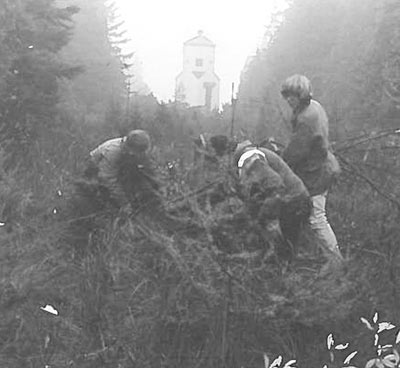
Protecting and preserving the land through acquisition and stewardship

Ensuring that people could enjoy it forever
Preservation Impact

1,700
Total acres protected

7
Acres of invasive species mapped by volunteers; one acre treated in 2023

4,997
Volunteer hours
The Ridges Sanctuary is an unspoiled wild place that occupies just over 1,700 acres in two units along the eastern edge of the Door Peninsula, a rocky finger of land projecting northward into Lake Michigan. On the west side of the peninsula is the shallow water of Green Bay, and on the east side is Lake Michigan, a deep and expansive inland sea.
The Peninsula itself is a ridge of dolomite limestone – part of the Niagara Escarpment that passes through east central Wisconsin, circles around the State of Michigan, and creates Niagara Falls in New York State.
The largest portion of The Ridges land, about 1,400 acres, is located on the north end of the bay of Baileys Harbor, WI. Much of this area is made up of a series of low, sandy ridges, alternating with wet areas called swales. The ridges run parallel to the shoreline of Baileys Harbor, and extend inland about a mile. Cooling breezes from Lake Michigan help to sustain a boreal forest in The Ridges Sanctuary – a forest type that is more characteristic of most of Canada. This forest, in which white spruce and balsam fir predominate, continues around the northern rim of the Door Peninsula.
Many of the plants found in this portion of the Sanctuary are more typically found further north. However, they survive here because of the cooling effect of Lake Michigan.
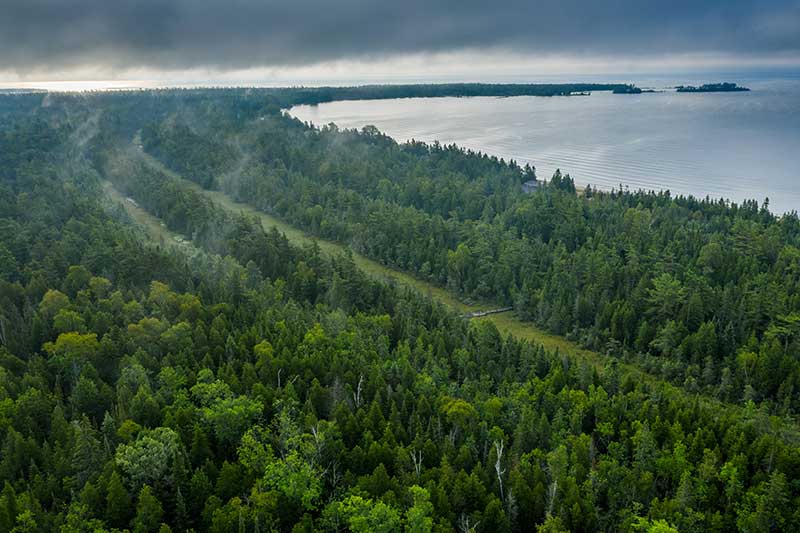

The Ridges Sanctuary also manages the Logan Creek Property, a parcel of 170 acres located south of Jacksonport, WI, on the north end of Clark Lake. This land is comprised of a variety of habitats, including upland hardwood forest, lowland cedar-hemlock forest, and frontage along Clark Lake and Logan Creek. Mature Beech, Hemlock and Sugar Maple trees are found throughout the property. Spring wildflowers are outstanding on this site, with hepatica, spring beauty, trilliums and trout lilies putting on a show from mid-April to the end of May. A trail system and parking lot have been developed on the site, at 5724 Loritz Road.
- Inspiring stewardship
- Preserving native plants & animals
- Accessible
Founders
In 1935, Albert Fuller, then Curator of Botany at the Milwaukee Public Museum, began spending a great deal of time traveling between Milwaukee and Door County, studying the rare flora which flourished on a parcel of land in Baileys Harbor.
What began as research quickly developed into an important conservation initiative. Fuller discovered that the parcel was leased to the county by the U.S. Lighthouse Service and that the county planned to develop a trailer park there. Thus began a two-year period of education and advocacy. Fuller gave countless presentations — often with his friend and fellow conservationist, Jens Jensen – to many residents of Baileys Harbor and the surrounding area, including Emma Toft and Olivia Traven. In 1937, these citizens and others formed The Ridges Sanctuary, Wisconsin’s first land trust, to protect the original 40 acres. The organization’s original mission was threefold:
To acquire by gift, purchase, or otherwise, part or all of the real estate in the area of the town of Baileys Harbor;
To acquire and hold other pieces of real estate in Wisconsin and elsewhere, and to protect and preserve the native plant and animal life found thereon; and,
To carry on educational and scientific activities which will promote the cause of conservation.
The founding of The Ridges created a ripple effect in Door County and set the stage for very important and effective future conservation efforts on the peninsula – The Nature Conservancy beginning in 1962, the Door County Environmental Council beginning in 1969, and the Door County Land Trust beginning in 1986.
Fuller’s model has endured and today forms the three pillars of the mission which governs The Ridges Sanctuary: To protect the Sanctuary and inspire stewardship of natural areas through programs of education, outreach and research. For over 80 years, those principles have guided the Ridges’ every action, resulting not only in land acquisition and protection, but in a broad array of education, outreach and research initiatives which make the Sanctuary accessible to the public and encourage private and personal land stewardship.

Albert Fuller
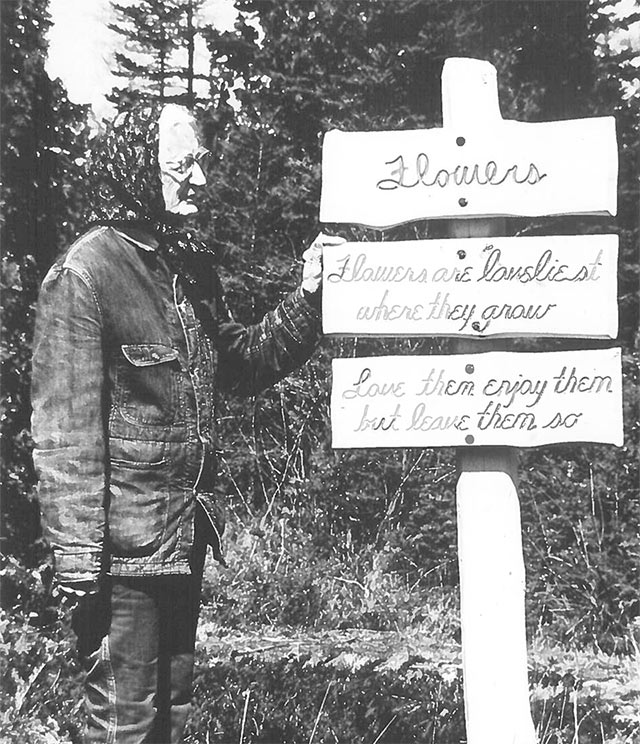
Emma Toft

Jens Jensen

Olivia Traven
Preservation Focus
Land Acquisition

Land acquisition is only possible when landowners have an interest in selling or donating to The Ridges and The Ridges has enough funds to cover any costs.
We thank all landowners who shared our vision for protection and The Ridges members for their dedication and support. If you have interest in donating or selling your property to The Ridges, please contact us at 920-839-2802.
Together they have made The Ridges what it is today.
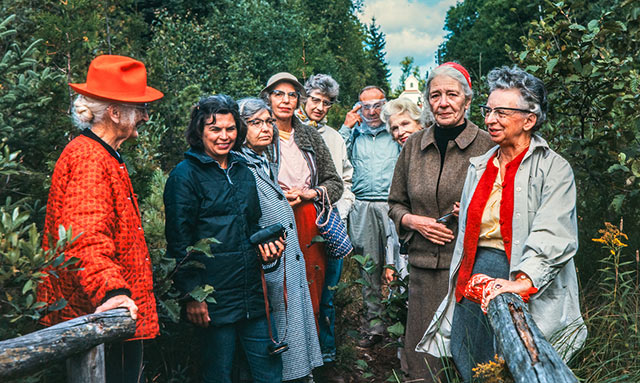
Knowles-Nelson Stewardship Program
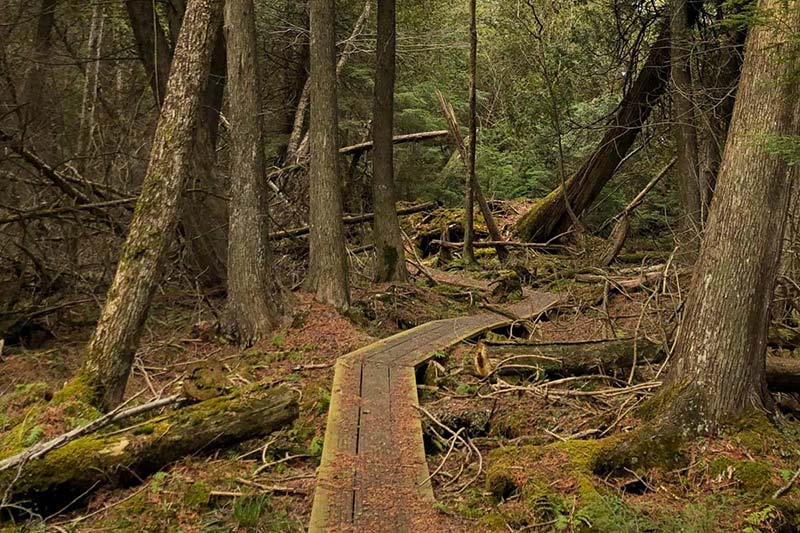
Since 1989, the Knowles-Nelson Stewardship Program
(Stewardship Fund) has protected lakes and streams, secured wildlife habitats, and enhanced recreational opportunities in Wisconsin.
This program, costing just $11 per resident annually, has generated $2 billion in natural services, enriching the state’s outdoor spaces. At the Ridges, the Stewardship Fund has made a significant impact. Since the Knowles-Nelson Stewardship Program was created in 1989, we are fortunate to have received over $1.5M that has protected nearly 600 acres.
While significant progress has been made, further efforts are needed. Soon the Wisconsin Legislature will begin development of the 2025-27 biennial budget. The WI DNR has submitted its agency request that would reauthorize the KNSF at $100 million per year for another 10 years, through fiscal year 2036. The 2025-2027 budget is expected to be approved in May or June 2025.
The renewed Knowles-Nelson Stewardship Program will assist Wisconsin in adapting to a changing climate, ensuring access to parts and green spaces for everyone, and conserving critical areas that provide us with clean air and water.
Wildflowers

The Ridges Sanctuary is internationally recognized for the incredible diversity of plant life found here.
Nearly 500 vascular plants find their home in this rich complex of boreal forest and wetlands. Some, like the delicate twinflower, are typically found much further north, but can survive here because of the cooling effects of Lake Michigan. Others, like the insect-eating Pitcher plant and sundew, prefer the acidic waters of the swales. Twelve endangered or threatened plant species are protected within the Sanctuary.
Among all the plants found here, perhaps none are better known and sought after than the orchids. Over 25 native orchids bloom in The Ridges Sanctuary. These range in size from the tiny heartleaf twayblade to the tall, elegant showy lady’s slipper. In order to protect these rare beauties from damage or theft, exact locations of most orchid species are usually not disclosed except to qualified researchers.
Visitors to The Ridges can hike the trail year-round. There are also opportunities to take a guided hike with one of our experienced Naturalists.
Birds
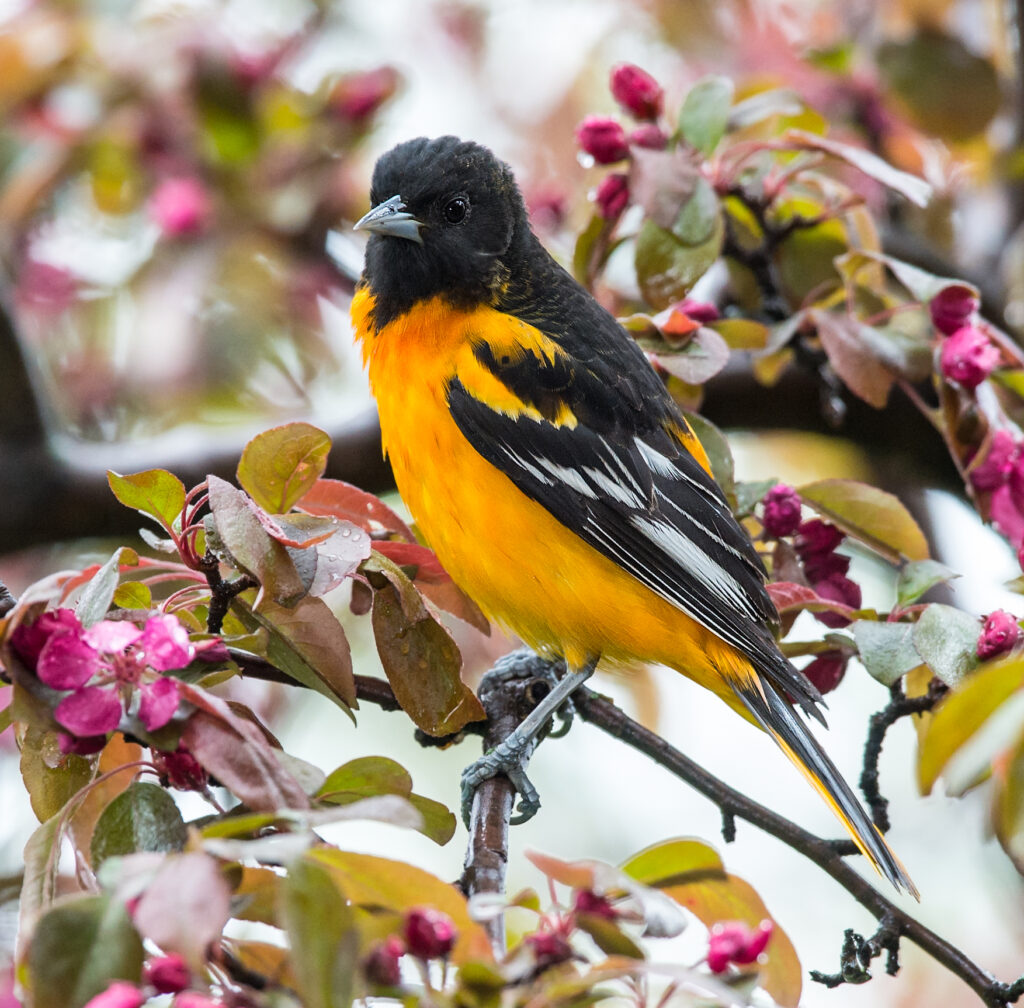
The Ridges Sanctuary is embedded within an area designated by the National Audubon Society as an Important Bird Area.
Our shorelines, wetlands, forests, and open upland habitats serve as crucial stopover, breeding, and wintering grounds for over 200 resident and migratory bird species. Fifteen species of warbler breed here, as do sandhill cranes. American woodcock, least flycatcher, golden-winged warbler, Brewer’s blackbird, rusty blackbird, and Connecticut warbler are among the state species of special concern that you might encounter during your own journey here. The latter two especially are in steep decline due in part to threats to their boreal forest haunts further north. Protecting our disjunct patch of boreal forest can only be of benefit to them.
Native Plant Demo Garden
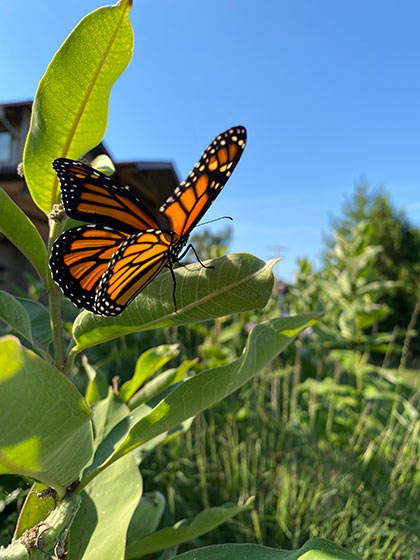
This garden was established in 2022 to showcase a native landscaped garden to our visitors and inspire others to do the same.
The ecological benefits of gardening with native plants are numerous, such as providing habitat and food for pollinators and other organisms, increasing natural biodiversity, and reducing the risk of invasive species introduction. Native gardens can look pretty too. Whether you are looking to plant in a meadow or around your house, landscaping can be environmentally friendly and look great at the same time.
Native plants support the entire food web by providing food for insects, birds, bats, small mammals, and other wildlife. This is particularly important now that scientists are documenting global declines in insect populations. Used in a rain garden, native plants also help minimize flooding and filter out pollutants. The variety of colors, shapes, and sizes adds beauty to any property. Get started with the resources below.
This demonstration garden was planted by The Ridges’ Volunteer Garden Crew and was partially funded through a grant from the Wisconsin Master Gardeners Association (WIMGA).
Original Plant List 2022:
Lady Fern (Athyrium filix-femina)
Witch Hazel (Hamamelis virginiana)
Prairie Dropseed (Sporobolus heterolepis)
New Jersey Tea (Ceanothus americanus)
Shooting Star (Primula meadia)
Purple Coneflower (Echinacea purpurea)
Little Bluestem (Schizachyrium scoparium)
Solomons Seal (Polygonatu biflorum)
Dwarf Chokeberry (Aronia melanocarpa)
Columbine (Aquilegia canadensis)
Trilium (Trillium grandiflorum)
Bigleaf Aster (Eurybia macrophylla)
Current Plant List
Lance-leaved Coreopsis (Coreopsis lanceolata)
Prairie Dropseed (Sporobolus heterolepis)
Dwarf Chokeberry (Aronia melanocarpa)
Witch Hazel (Hamamelis virginiana)
Solomons Seal (Polygonatu biflorum)
New Jersey Tea (Ceanothus americanus)
Black Cohosh (Aquilegia canadensis)
Columbine (Aquilegia canadensis)
Purple Coneflower (Echinacea purpurea)
Shooting Star (Primula meadia)
Brown-eyed Susan (Rudbeckia triloba)
Milkweed (Asclepias syriaca)
Pussytoes (Lobelia cardinalis)
Cardinal Flower (Lobelia cardinalis)
Little Bluestem (Schizachyrium scoparium)
Resources
WDNR Native Plants Page: https://dnr.wisconsin.gov/topic/endangeredresources/nativeplants.html
Wild Ones Native Garden Designs Website: https://nativegardendesigns.wildones.org/
Wisconsin Native Plant Guide: https://kb.jniplants.com/native-plant-guide/
Prairie Nursery Website: https://www.prairienursery.com/
Evergreen Nursery Website: https://evergreennurseryco.com/
Pollinator Conservation Resource Center: https://xerces.org/pollinator-resource-center/great-lakes
Hunting Policies
Deer Hunting
Wisconsin’s 2024 Gun Deer Hunting Season (Nov. 23-Dec. 1)
The Sanctuary was established to protect and preserve the unique flora of this area. White-tailed deer, with historically and unnaturally high population densities, are threatening the existence of rare plants, such as the showy lady’s slipper. In order to better manage The Ridges Sanctuary and to control the damage by white-tailed deer, hunting is allowed to keep the number of deer in a more appropriate balance with their habitat.
Parts of the Sanctuary are open to hunters during the gun deer hunting season. Refer to our hunting maps for more information. Even though hunting is not allowed on established trails, all Ridges trails are closed during the gun hunting season. This trail closure applies to hiking trails in Baileys Harbor and at The Ridges’ Logan Creek Property near Jacksonport.
All registered deer hunters are required to fill out the Deer Hunting Report Form for each location that was hunted each day.
All Other Hunting
The Ridges has received funds from the Knowles-Nelson Stewardship Fund to acquire some recent land parcels. The Fund supports land preservation plus opening up the land for many different public uses. These recent parcels are now open to all hunting and trapping seasons. Hunters need to refer to the hunting maps as to what properties are open to different hunting seasons. Hunters need to follow all Wisconsin DNR hunting and trapping regulations.
Registration Form and Hunting Maps
The Ridges requires that all hunters and trappers fill out a registration form and return it to The Ridges prior to hunting or trapping on our property. Hunting or trapping without prior registration, or violation of any stated rules, will be cause for automatic denial of permission to hunt on The Ridges’ property in the future. This form also lists the Special Hunters’ Provisions by which all hunters must abide. Registration forms and property maps are available at the Ridges office, 8166 Hwy 57. If you have any questions or wish to report violations of DNR hunting laws, call 920-839-2802 or the Door County Sheriff at 920-746-2400.
Designations
The unique ridge and swale complex of The Ridges Sanctuary is home to an ecologically diverse wetland system that supports an impressive list of rare plants and migratory birds. The following designations reflect a joint commitment to the long-term preservation of The Ridges and serve to garner public and private support of our organization.
Ramsar Wetland of International Importance

The Ramsar Convention on Wetlands designated the Door Peninsula Coastal Wetlands as a Wetland of International Importance in 2014. This designation acknowledges wetlands across the globe as being of significant value locally, and cumulative for humanity. The Door Peninsula Coastal Wetland covers over 11,000 acres. Partners of this Ramsar Site include the County of Door, Door County Land Trust, The Nature Conservancy, University of Wisconsin – Green Bay, the Wisconsin Department of Natural Resources, The Ridges Sanctuary and Private landowners.
Wisconsin Wetland Gem
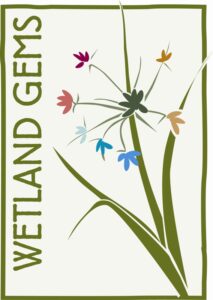
The Wisconsin Wetland Association developed a list of 100 Wetland Gems® that recognizes wetlands for their high-quality habitat and biodiversity. The Ridges Sanctuary is recognized within the Moonlight Bay Wetland Corridor along with the Ephraim Swamp, Toft Point, Mud Lake Wildlife Area, among other important Door County wetlands.
Bird City Wisconsin

Bird City Wisconsin was created by a coalition of conservation and bird-focused organizations to promote the enhancement of bird habitat and to educate the public about the value of healthy ecosystems for birds. In partnership with The Ridges, the Town of Baileys Harbor earned the Bird City Wisconsin designation in 2002.
Important Bird Area

The National Audubon Society spearheads an ambitious effort to identify and protect the most critical landscape for birds, known as Important Bird Areas (IBAs). To date, over 2,750 IBAs have been designated covering more than 417 million acres in the United States.
National Natural Landmark
The Ridges Sanctuary was designated as a National Natural Landmark in 1967. The Toft Point- Mud Lake area is a series of sand ridges and swales with boreal forest and bog vegetation. The site contains unusually high species diversity, as well as the best mixed stand of large red and white pine, hemlock, and norther hardwoods on the western shore of Lake Michigan.
The National Natural Landmark Program was established in 1962 to identify and recognize sites of outstanding value in illustrating America’s natural heritage.